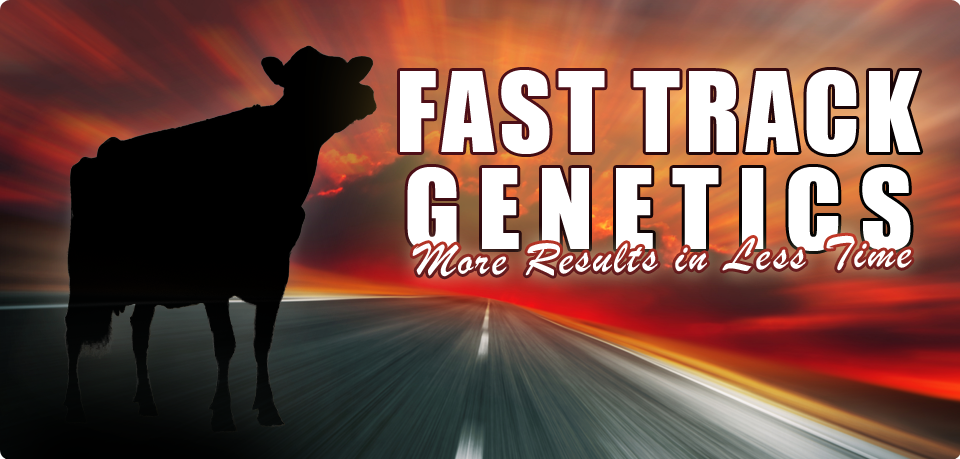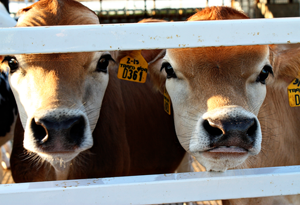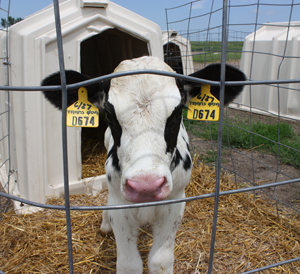The history of elite livestock breeding is littered with cattle men and women who gave up after becoming frustrated with the long wait for success! Some never achieved an Extra Sire from their breeding and many gave up on cow families, before they produced results. The turn of the century has seen tremendous reductions in these genetic turn intervals. Embryo transfer, genomics and IVF are fast tracking modern dairy cattle genetics.
Trans Ova Genetics is a reproductive technology company that aims to meet the needs of progressive cattle breeders who want to take advantage of the potential for speeding up the genetic timeline. “We work with breeders who want to utilize the advanced reproductive technology services from Trans Ova Genetics to take their herd to the next level of genetic gain.” says Mark Allan PhD, Director of Marketing and Genomics for Trans Ova Genetics in Sioux Center, Iowa.
IDENTIFY YOUR BEST. MULTIPLY YOUR SUCCESS.
He outlines the process. “The breeders identify the top genetics they possess in their herd and then they come to Trans Ova Genetics to multiply that success.” Dr. Allan points out the opportunities. “By utilizing the services of in vitro fertilization (IVF), in vivo produced embryo transfer (ET), and sexed semen technologies, these producers can maximize the reproductive production from their most elite genetics in greater numbers.” It is a good business decision and an expeditious one, “The technologies allow for increased selection intensity and shortened generation interval which result in an accelerated rate of genetic change.”
IT ALL STARTS WITH EMBRYO PRODUCTION
We all recognize that speedy turnover of generations is great but, in the end, genetics is about the numbers. One of the first numbers affecting eventual success, is the number of embryos harvested. Dr. Allan keeps an eye on these very important results and gives a more detailed picture. “Presently, across all of the participating centers and satellites of Trans Ova Genetics in the U.S., and across multiple breeds and ages of donors, we are averaging about 5.0 viable embryos per donor aspirated. As with ET technology, a producer will see variation from donor to donor with a distribution from zero to numbers in excess of 15 embryos per donor per aspiration.” This is good news from a knowledgeable source.
THESE ARE BIG CHANGES. ARE THEY GOOD OR BAD?
It is human nature, when presented with the latest greatest technology to look for the downside. You ask yourself, “What is the worst case scenario?” Some breeders may be concerned that the market is being flooded, leaving no room for the middle market cattle. To that comment, Dr. Allan gives this well-considered response, “Many technology improvements have led to dramatic increases in genetic improvement. One of the early changes that led to a giant leap in genetic gain was implementation of artificial insemination (AI) in the dairy industry. This technology is widely accepted today and used by producers large and small. Historically, each time a new technology has been introduced to the reproductive technology continuum, there has been some resistance and trepidation about how it will affect breeders. Changes in the marketplace may require that producers have to make a change in how they utilize their animals coupled with available technology. This may mean changing the current paradigm that exists for some segments of the industry.”
 AT THE END OF THE DAY, LOOK FOR BIG BENEFITS NOT PREVIOUSLY ACCESSIBLE
AT THE END OF THE DAY, LOOK FOR BIG BENEFITS NOT PREVIOUSLY ACCESSIBLE
In the clearest terms possible, Dr. Allan summarizes “IVF is a technology that allows breeders to collect offspring from open cows, pregnant cows, virgin heifers, as well as problematic females that have had difficulty in conventional breeding attempts. It is also possible to retrieve oocytes (unfertilized eggs) from donors shortly after a death event to produce one final genetic collection.”
GETTING THE JUMP ON THE NEXT GENERATION
This technology can be used without altering other vital aspects of your breeding program. “Historically, breeders were forced to decide whether to risk future productivity of young donors by flushing them as virgin heifers or just postponing embryo production until after their first calf.” Says Dr. Allan. “Using IVF technology to create pregnancies from a donor gestating her natural calf allows breeders to generate offspring from the elite heifers and keeps them on an annual production cycle to calve on schedule with the rest of the herd.”
WHERE TO FROM HERE?
Breeders are seeing the potential and looking forward to entering international markets as a result of utilizing IVF technology. Dr. Allan feels the promise will be realized. “In time, IVF embryos will be available for export to most all locations where in vivo embryos are presently being exported.” His optimism is slightly tempered as he considers certain variables. “Getting off to a good start by setting and meeting pregnancy rate expectations and results will be important to the rate of acceptance in export markets.”
THE FUTURE IS FILLED WITH POTENTIAL
It isn’t surprising that Dr. Allan is positive when looking toward the future. “With IVF, one is able to capture genetics that were previously unavailable from pregnant donors, young virgin heifers, down and injured animals, and donors unsuccessful in conventional ET.” He elaborates further. “We are already seeing the impact of Genomics and this will continue to become stronger with a future that will include the potential to make faster genetic gain for low heritable traits related to reproduction and health.”
WHAT’S IN IT FOR YOU?
With changes coming fast, it becomes even more important to make well-considered decisions. Dr. Allan urges “Like all breeding programs, a breeder must have an end goal in mind when he begins a project.” He says that a successful breeding program must be based on good business strategies. Trans Ova Genetics encourages their clients to take three key steps:
- Be fully aware of what makes your operation profitable.
- Set goals both short and long term.
- Use technologies that will help you accomplish your goals.
Dr. Allan outlines key aspects to be aware of regarding this technology. “When compared to conventional embryo transfer, IVF may further maximize the potential of an elite female in a short time period, as the interval between IVF aspirations is shorter than the interval between traditional embryo transfer sessions. It is possible to obtain IVF cycles every week or every other week, whereas most embryo transfer programs will collect donors every 40 to 60 days. While conventional embryo transfer generally requires the use of two or three units of semen per donor, IVF can be used to maximize the value of rare, sexed or expensive semen. One unit of semen can be applied to oocytes from up to five or more different donors, or semen from several different bulls may be used to fertilize a large group of oocytes collected from an elite female. Sexed-sorted semen or Reverse sorted semen (semen that has been sorted after thaw) coupled with IVF allows breeders to producer offspring with over 90% accuracy for the sex desired. ”
BULLVINE BOTTOM LINE
New technologies, including IVF, are proving to be cost effective. They give dairy cattle breeders the opportunities to improve both their cattle and their bottom line. The extra effort is worth it.
MINIMIZE THE TIME TAKEN. MULTIPLY THE GENETICS. MAXIMIZE THE RESULTS ACHIEVED.
Not sure how much to spend on that great 2 year old?
Want to make sure you are investing your money wisely?
Download our Dairy Cow Investment Calculator.









 AT THE END OF THE DAY, LOOK FOR BIG BENEFITS NOT PREVIOUSLY ACCESSIBLE
AT THE END OF THE DAY, LOOK FOR BIG BENEFITS NOT PREVIOUSLY ACCESSIBLE









Leave a Reply
You must be logged in to post a comment.